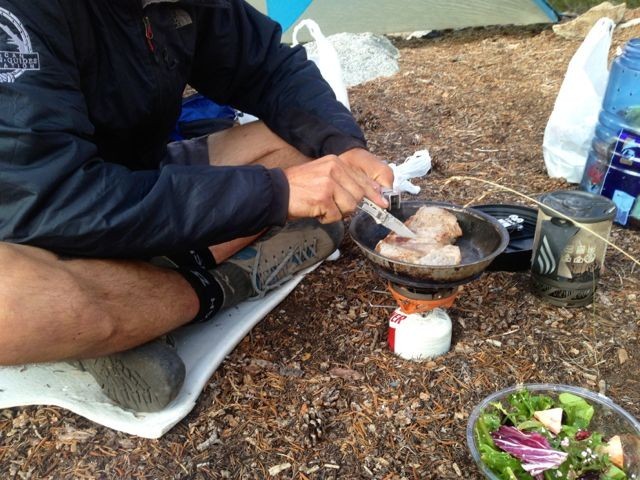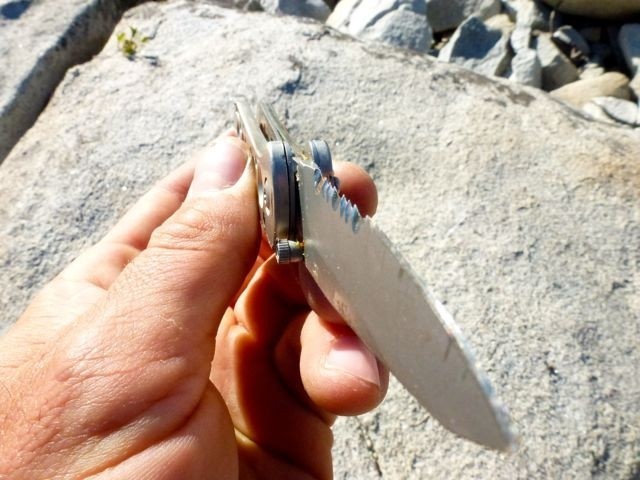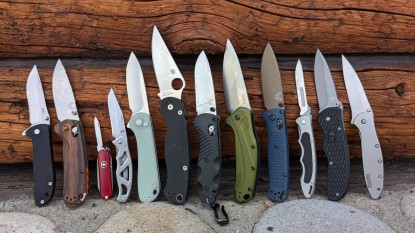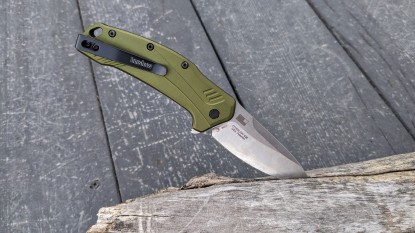CRKT Mount Shasta Review
Our Verdict
Our Analysis and Test Results
The CRKT Mt. Shasta is a well-built, small, and useful pocket knife. The hybrid blade will appeal to many users and the blade locking mechanism, while unnecessarily complicated for most, will be perfect for some users.
Blade and Edge Integrity
Ergonomics
The CRKT Mt. Shasta is small. And feels small in usage. Like all the knives in our test, portability and ergonomics scores are direct competitors. If your needs emphasize portability, consider the CRKT Mt. Shasta. The one-hand opening design of the Mt. Shasta works reliably from either hand. The location of the pocket clip requires that the user pulls it from her pocket and then reorients the entire knife before deploying the blade. Only the Benchmade knives worked smoother in this regard. The blade of the Mt. Shasta locks open and then the lock locks open. In other words, fully unhinging the blade allows a standard “liner lock” to snap into place, holding the blade open. And then, a sliding finger stud can be deployed to add an additional locking mechanism. This seemed unnecessary to our testers. And in application, the secondary locking mechanism regularly slid inadvertently into place. Closing the knife from “double locked” status requires two hands and a few steps.
Construction Quality
As indicated above, the CRKT received perhaps the most vigorous durability assessment in our entire test. The knife was dropped hundreds of feet from a back-country rock climb in Kings Canyon National Park. Not only did we recover it from the base, it remains fully functional after the mega plunge. Hinges, locking mechanisms,- and knife handle pieces all remain intact and operating smoothly.
Portability
Only the Victorinox Classic SD Swiss Army Knife and Gerber STL 2.0 Fine Edge weigh less than the Mt Shasta. Both of these smaller knives are far less useful for heavy cutting tasks. Of the knives we tested, the Mt. Shasta is the most compact knife equipped with a pocket clip. If this is your preferred method of carry, yet you use a knife very seldom, the CRKT is a top contender.
Best Application
Select the CRKT Mt. Shasta for back-country trips and rock climbing, especially if you may also carry it for every day usage in a pocket.
Value
Given the reasonable price and remarkable tested durability, the Mt. Shasta is an incredible value. The hybrid blade design makes it more difficult to sharpen, which may compromise long term function. However, if you employ a professional sharpening service, or put in the time to learn to sharpen the serrated portion, this can be a moot point.
Conclusion
The CRKT Mt. Shasta pocket knife is a well-made, compact piece of equipment. All aspects of its construction hold up to rigorous usage. The small size and overly complicated locking mechanism make it a little more difficult to use, especially for quick tasks.
Other Versions and Accessories
CRKT 14K summit series
- Similar version with a longer blade length
- Weight - 4.2 ounces (a little heavier than the Shasta)
- Blade length - 2.875 inches
- $50







